Tomm El-Saieh / Toma at Luhring Augustine / NYC
By Jonathan Goodman
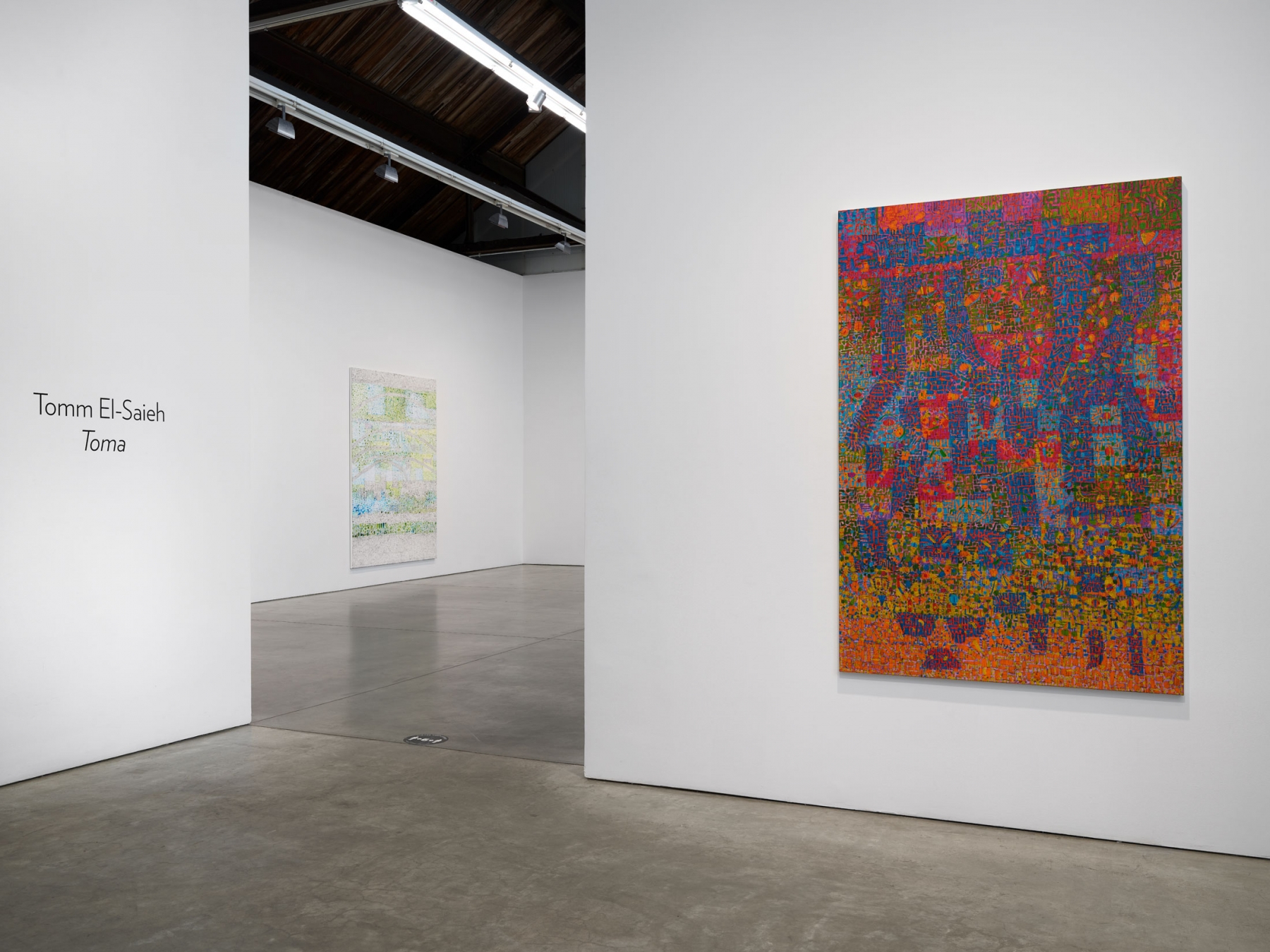
Tomm El-Saieh, Toma, Installation view Luhring Augustine, New YorkBorn in Port-au-Prince, Haiti, raised and still living in Miami, Tomm El-Saieh paints large, colorful abstract paintings that consider the Western nonobjective tradition but also, in their complex embodiment of smaller forms, can seem puzzle-like, look like the designs of cities, or complex patterns that might suggest, synesthetically, the intricacies of music. “Toma,” the title given to the show, refers to El-Saieh’s childhood nickname but also to Ayiti Toma, the name Haitian revolutionaries gave to Haiti. Thus, even if the paintings are abstract, it can be noted that this excellent show has intimations of private and public life. The subtlety of the paintings, with their remarkable complexity based on gradations of form, is intensified by El-Saieh’s use of color, which is often intense and can, in a few cases, be nearly pastel-like in its suggestion of light. A younger painter in his middle thirties, El-Saieh makes it clear in this show that traditional abstraction can be reworked and made new. His work, striking at first glance, also rewards extended study. Often bands of color, thought to be uniform, lacking specific elements when seen from a distance, are in fact composed of many smaller parts, in nearly mosaic-like fashion.
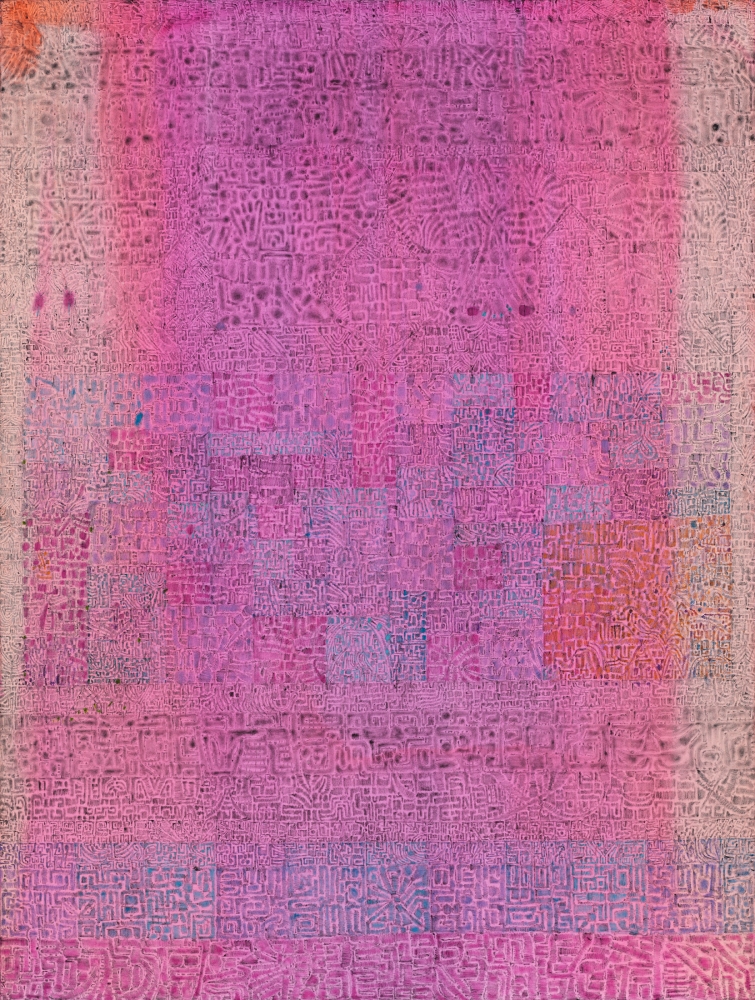
Tomm El-Saieh
Cazale, 2021
Acrylic on canvas
96 x 72 inches
(243.8 x 182.9 cm)In large part because of El-Saieh’s beautiful use of color, the paintings convey deep emotional states. Yet that does not mean that the artist’s works are lacking in structure. Instead, what visitors note is his determination to convey feeling through subtle relations between shades of related color. In the painting titled Toma (2021), red, yellow, and orange streaks take over the composition, becoming close to drips as they move down the painting. The middle part of the work is taken up with reds and oranges, and the yellow passages occur on either side of the center. Given its large size, Toma takes on a majestic aspect. It fits neatly into the history of the New York School, but, at the same time, its inner complexities suggest other experiences, perhaps referring to Haiti’s current difficulties. Choublac (2021), which means hibiscus flower in Haitiain, possesses a green center framed by red, with a purple passage in the upper right corner. The painting is made energetic by the daubs of green, yellow-green, and yellow embellishing the entire effort; the short marks are darker at the bottom of the picture. In addition to suggesting the hibiscus flower, the percussiveness of the painting might be linked to music.
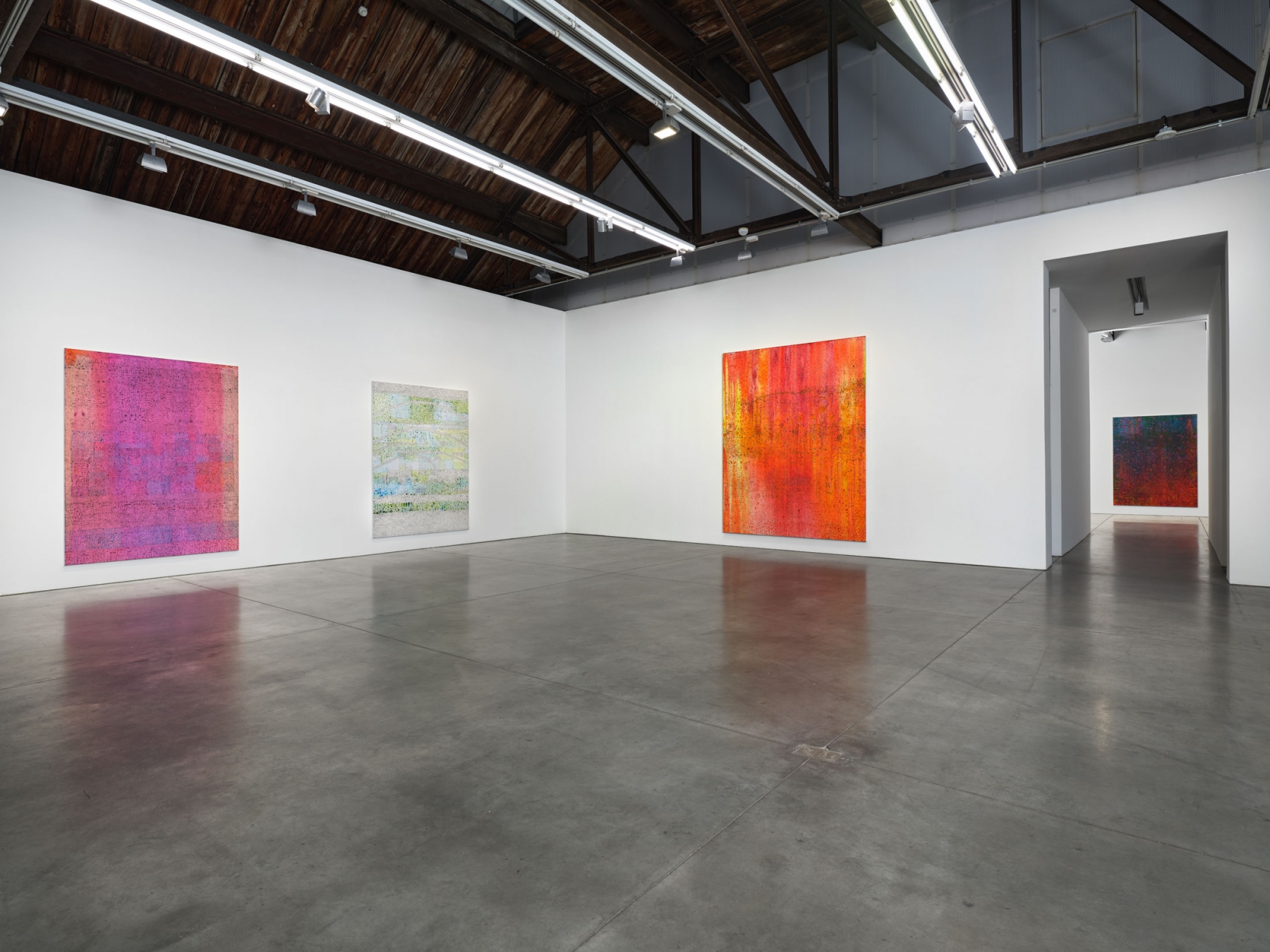
Tomm El-Saieh, Toma, Installation view Luhring Augustine, New York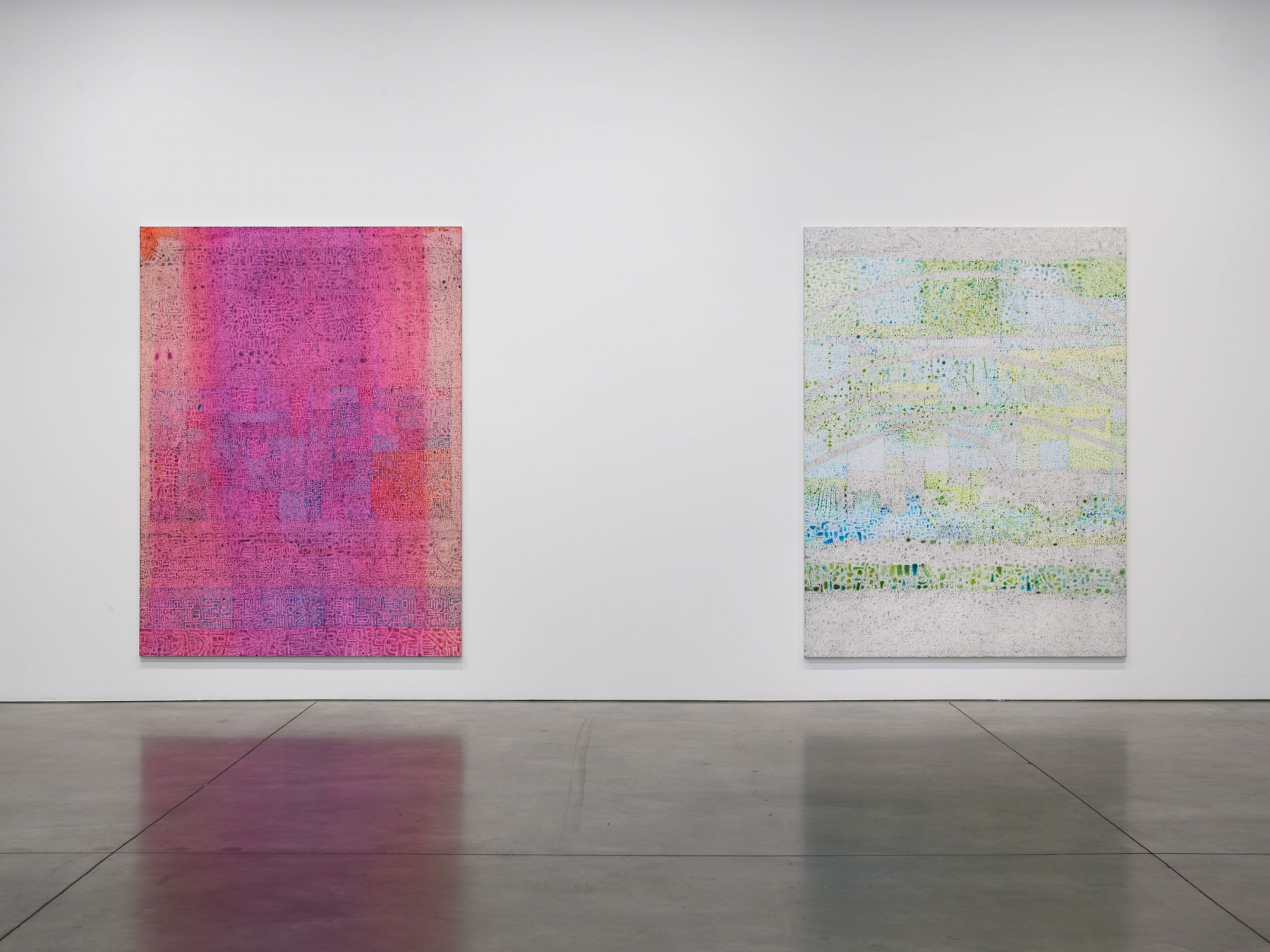
Tomm El-Saieh, Toma, Installation view Luhring Augustine, New York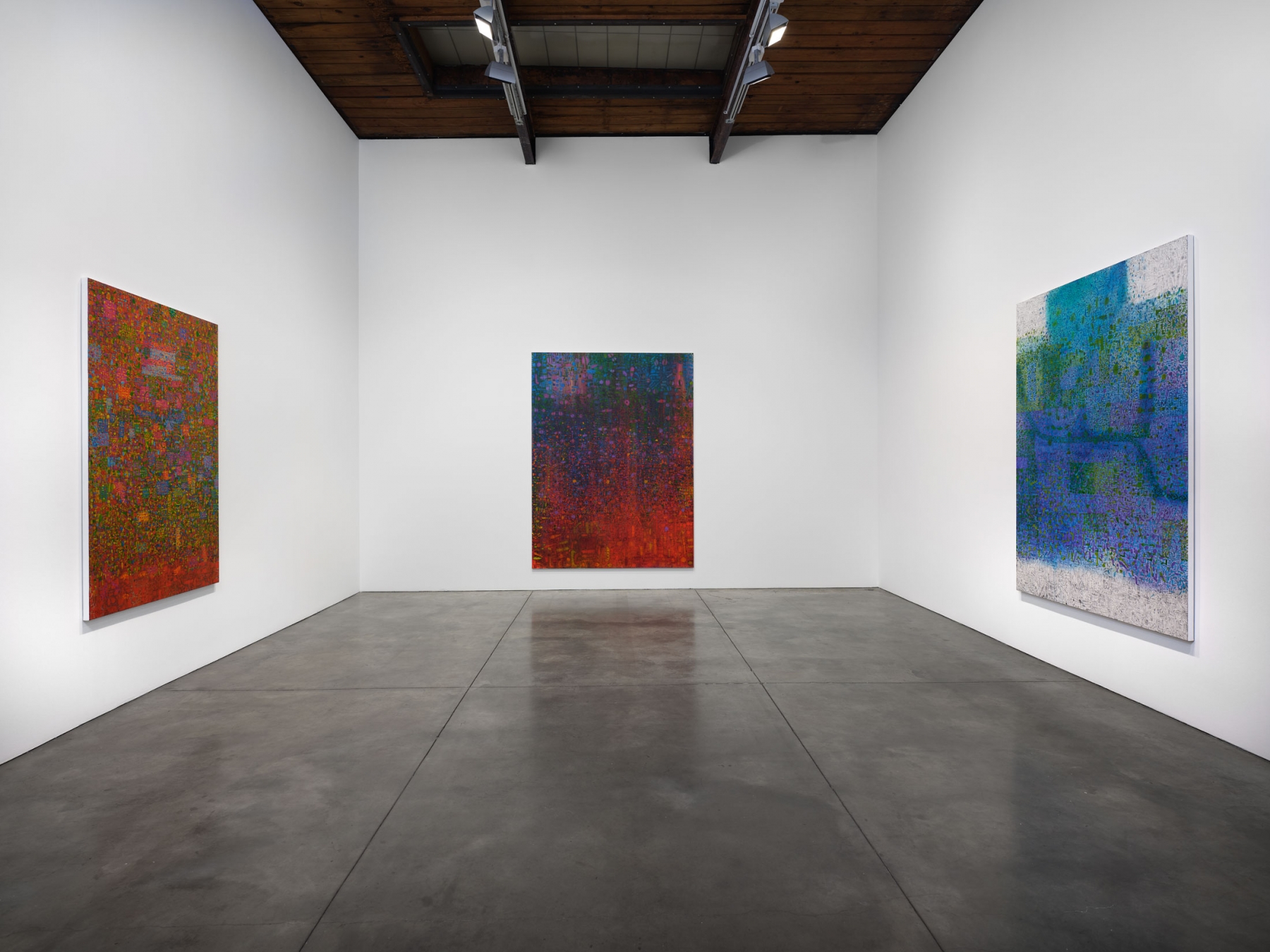
Tomm El-Saieh, Toma, Installation view Luhring Augustine, New YorkVilag Imaginè (2021), is a homage to the tradition of rendering a village in Haitian painting. It is a complex, rough mosaic. Consisting mostly of dots and rectangles–yellow and orange toward the bottom, blue and purple in the middle, and green toward the top–the painting’s overall effect might be likened to an overview of a small village. The non-symmetric patterns might well reflect village life. They fill the composition without establishing a center. The forms tend slightly toward geometric design rather than organic expressionism. One can also speculate that the work’s rhythmic assertions display a visual understanding of music. In a similar painting, named Wanga Nègès (2021), Haitian for hummingbird, small squares of color, red especially (there is a red passage that overtakes the lower end of the painting), but also bits of yellow, blue, and green, combine in a way that resembles the iridescent colors of the hummingbird. Both works marvel in the density of their complex patterns, taking inspiration from recognizable things. They reward close attention. Here the abstraction is taken from the hues of an actual bird.
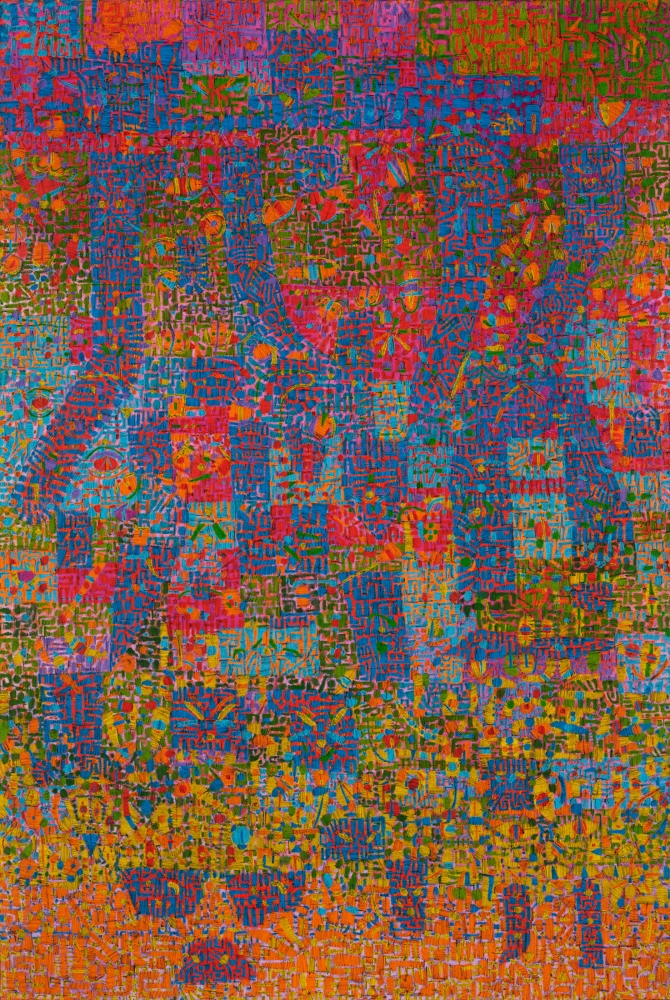
Tomm El-Saieh
Vilaj Imajinè, 2021
Acrylic on canvas
72 x 48 inches
(182.9 x 121.9 cm)Fiji-Lari (2021), meaning “face on the street” or “word on the street,” is an unusually beautiful pastel painting, in which a number of colors–orange, blue, green, mauve, and gray–create both a larger pattern of rectangular blocks and a smaller one, made up of diminutive shapes. At the bottom and the top, one can see a rough grid, but in the middle, the freedoms of the gray forms take over. This is a lyric painting of accomplishment, yet it was explained to me that its origins likely came from El-Saieh’s listening to political developments on the Haitian radio. It is a masterful painting committed to patterned abstraction, but, like the others in this fine show, it is linked strongly to the outside world. El-Saieh is an abstract painter who has incorporated the experiences and influence of his life into patterns of great subtlelty. In New York, the work may well be incorporated by viewers into a reading that emphasizes the tradition of nonobjective painting, but this does not do full justice to the art. El-Saieh is too independent an artist to ignore the experience of his own life and culture, even while transforming lived experience into very good abstract artworks.
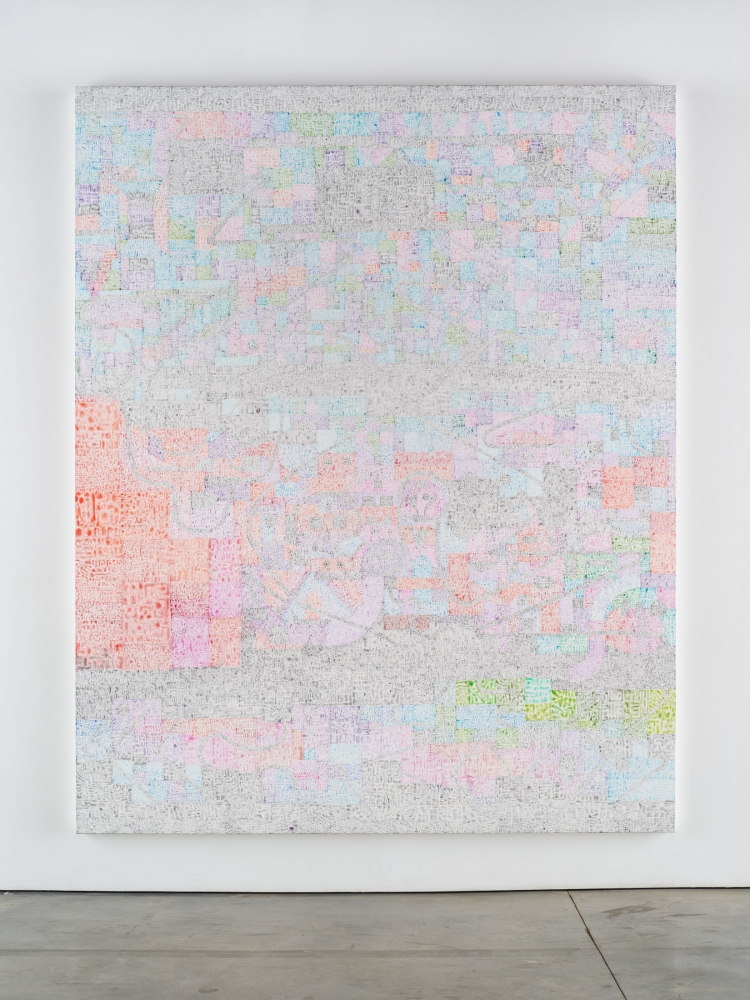
Tomm El-Saieh
Figi Lari, 2021
Acrylic on canvas
120 x 96 inches
(304.8 x 243.8 cm)
